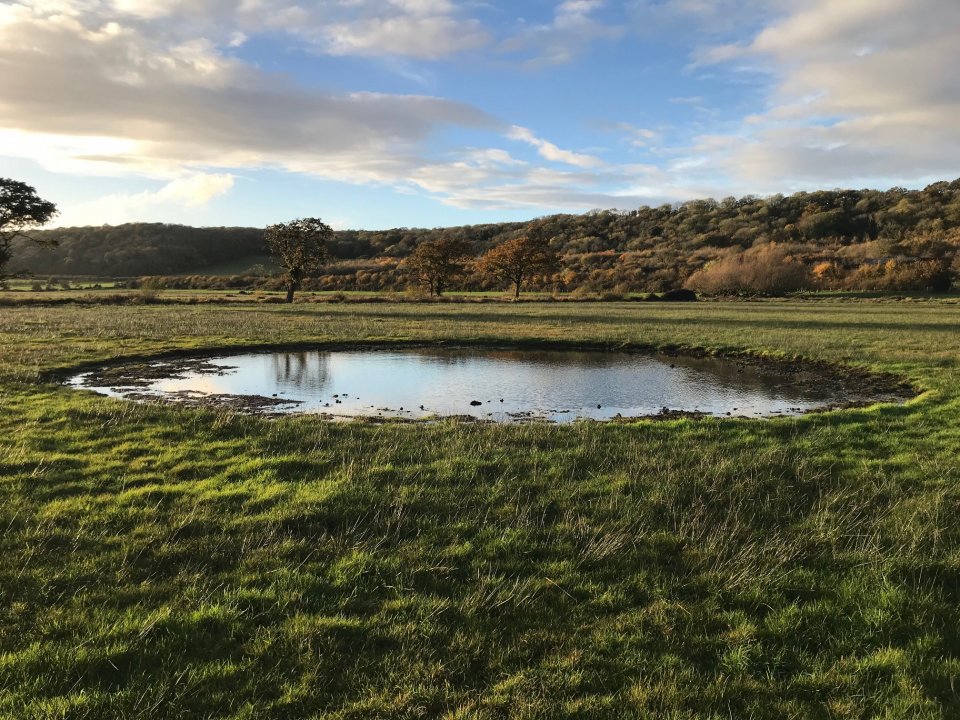
The North Somerset Levels and Moors (NSLM) is an extensive area (7950 ha) of coastal and floodplain grazing marsh adjacent to the Severn Estuary between the Mendip Hills in the south and Bristol to the North. The area consists of wet low-lying grassland separated with drainage ditches and it is under threat from future housing developments and changes in land use.
To work with landowners to improve habitat management for wildlife and to promote soil management to help mitigate flooding, improve water quality and increase habitat for wetland birds.
A three-year survey undertaken by the Avon Wildlife Trust (AWT) between 2011 and 2014, showed that the ditch and rhyne network across the NSLM was significantly neglected within farmland areas. It was clear that a more collaborative approach was needed to tackle this problem. Therefore, in 2015 the AWT formed a local delivery partnership which includes the Environment Agency, Natural England, Wessex Water, North Somerset Council, Farming and Wildlife Advisory Group (FWAG) and the International Drainage Board. This partnership coordinates an annual work programme to deliver habitat management, prevent flooding, improve water quality, ditch management and restoration of Sites of Special Scientific Interest (SSSI) features.
The partnership’s work to date has included the restoration of the Gordano Valley to bring back breeding lapwings to the area. For this project scrapes (shallow pools) were created to provide nesting sites for lapwings. AWT worked with farmers to manage the land appropriately for lapwing breeding such as cutting the grass the right height and modifying cattle grazing.
The surrounding ditch network of the SSSI site Puxton Moor is a clear priority area. The partnership will carry out ditch reprofiling allowing water to run off the fields and into the ditches, as well as scrape creation and re-seeding of grassland areas. The partnership also works with local farmers and landowners through leading workshops and creating flyers to improve their understanding of the importance of biodiversity within their fields and ditches. Farmers are also offered small grants as an incentive to restore their ditches.
|
Potential impacts/ benefits |
||||
|
Challenges addressed |
Enhancing sustainable urbanisation |
Restoring ecosystems and their functions |
Developing climate change mitigation |
Developing climate change adaptation |
|
Green space management (Including enhancing/conserving urban biodiversity) |
· Improve soil quality |
· Increase biodiversity · Improve connectivity and functionality of blue and green infrastructure |
· Carbon sequestration and storage |
· |
|
Water management |
· Improve water quality |
|||
|
Participatory planning and governance |
· Social inclusion · Increase stakeholder awareness and knowledge about NbS |
|||
- Carbon sequestration and storage
- Improve connectivity and functionality of green and blue infrastructures
- Increase Biodiversity
- Improve water quality
- Increase stakeholder awareness & knowledge about NBS
- Social inclusion
Can be used in other areas in need of large scale ecosystem restoration where much of the land is privately owned.
Partnerships are important to an integrated large-scale ecosystem restoration project and the necessary funding.
Long term funding is needed to build and sustain relationships and trust between organisations and landowners/farmers which is the key to the success of such projects.
Funded by Wessex Water for 5 years.
Biffa awarded £46,000 for restoration of the Gordano Valley.
Banister Charitable Trust awarded £20,000 for Puxton Moor.



